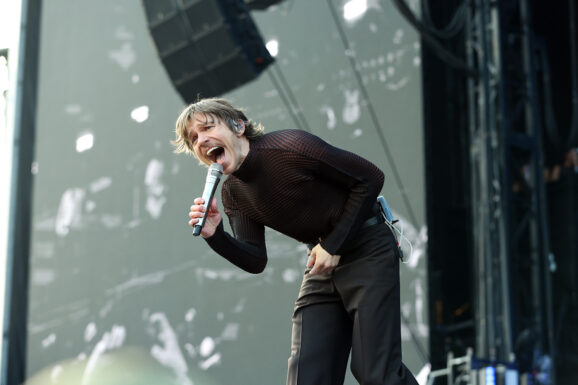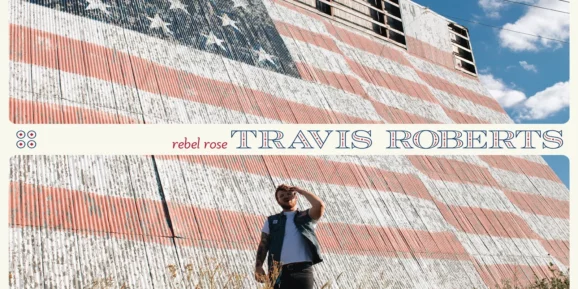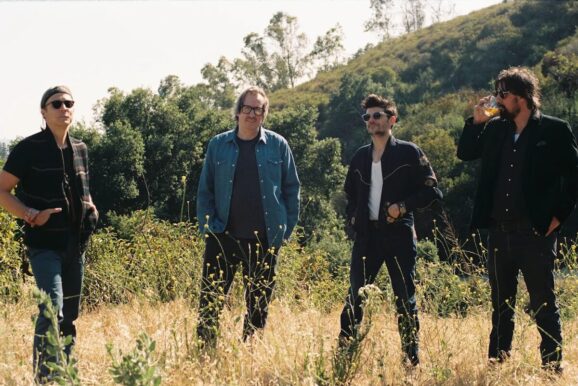The ultra-deluxe package design of The Complete Budokan 1978 mirrors the unusually polished and professional nature of its musical contents. Originally released as a double-LP set of vinyl containing selections from the two concerts here presented in their entirety, that set (and this one) might well have been titled ‘Greatest Hits Live.’
But doing so would’ve given short shrift to what becomes readily apparent upon close perusal of all the contents of this new release. The range of Dylan originals here is impressive, from 1963’s “A Hard Rain’s A-Gonna Fall”–in an instrumental(!) arrangement beginning the shows–to “Is Your Love In Vain?” from the Street Legal studio album that wouldn’t be released for four months. The generally accessible nature of the fairly similar two setlists is also proof Bob can cater to audiences when he chooses.
Even more laudable (and more in character), however, is the novel means by which Dylan and his eleven-piece band reinvent so much of the material. The presentation is a primer on the extent to which exceptional material can accommodate a great variety of arrangements. For instance, who would’ve imagined “Blowin’ In The Wind” as a hymn? The gospel flavor of that number is due largely to the angelic presence of vocalists Helena Springs, Debi Dye, and Jo Ann Harris and their prominence is no less influential than drummer Ian Wallace and percussionist Bobbye Hall on the reggae rearrangement of “Don’t Think Twice, It’s Alright.”
Meanwhile, the familiar organ sound of mid-sixties Dylan comes to the fore via keyboardist Alan Pasqua on “Simple Twist of Fate.” There too violin is almost equally prominent as employed by multi-instrumentalist David Mansfield (like bassist/vocalist Rob Stoner and rhythm guitarist Steven Soles, a hold-over from the Rolling Thunder Revue band). The self-disciplined but nonetheless forceful playing of guitarist Billy Cross and saxophonist Steve Douglas–an emigre from Phil Spector’s studio crew–ratchet up the intensity of “All Along The Watchtower” from February 28.
The remixing and remastering, by Tom Suzuki and Akihito Yoshikawa respectively, only heightens the impact, nuance and gusto of such interplay. In the midst of such reimaginings, the frontman is decidedly unself-conscious –except for a flash of vocal self-caricature on 3/1’s “Just Like A Woman”–at first using his nasal croak to counterpoint the polish applied to “Going Going Gone,” then harmoniously hitting and holding the notes near the conclusion of this cull from ’74’s Planet Waves. (Placement of this number at the end of the first set each night is a concession to show business counterpointing the fairly early insertion of “Like A Rolling Stone” into the proceedings).
The Complete Budokan 1978 is not, however, an uninterrupted string of ingenious moments. In fact, Dylan and company took a while to find their bearings on March 1st. The otherwise well-practiced ensemble (who would reappear on the aforementioned studio album to come) come across alternately stiff and stilted “I Threw It All Away” and “Shelter From The Storm.” And “Love Minus Zero/No Limit” is simply too sweet for its own good, except for the rasp of the bandleader’s harmonica.
One of the few appearances of this familiar sound over the course of the four hours total playing time contained on four CDs (also on eight LPs and in digital configuration plus another double vinyl of highlights), this interval nevertheless hints at the main premise of The Complete Budokan 1978. This compendium is the sound of Bob Dylan, in turns, taking no little pleasure and pride in the music he’s making: why else would the ultra-glossy front cover of the twelve-by-twelve slipcase feature an action photo of the man so clearly deep in rapture?
The raised lettering over that prepossessing image is only further evidence of the care involved in curating this extensive box set. Along with the hardboard enclosure housing the compact discs is a folder packed with memorabilia such as replicates of concert tickets, posters, and a tour program, alongside a fifty-eight-page booklet containing not only a plethora of candid photos but also a fair amount of text. Refreshingly, the writing by label product manager Tetsuya Shiroki (co-producer with Heckel Sugano) is bereft of the hyperbolic pretension devoted to so much of Dylan’s work, a temptation to which essayist Edna Gunderson also refuses to succumb.
It’s fascinating to read a clear-cut explication of the logistics behind the original recording as well as the attention to detail involving the exhumation and preparation of the recordings from the vault prior to assembly and issue. The generally matter-of-fact tone of the prose further reaffirms the deceptively low-key approach applied to this project.
Accordingly, despite its historical importance in completing something of a missing link in the wide arc of Nobel Laureate’s career, The Complete Budokan 1978 is notably missing designation as an entry into the ongoing archive initiative known as The Bootleg Series. Consequently, this is one of those ever-so-rare Bob Dylan items to be taken almost strictly at face value and savored as such.










